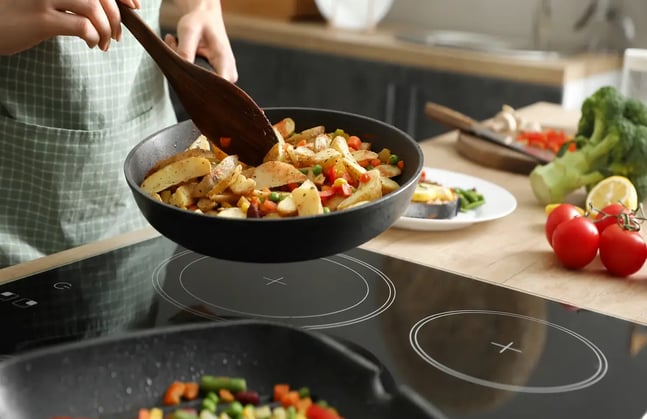
How to Plan and Execute Perfect Batch Cooking Sessions
Once you’ve mastered efficient cooking and kitchen organization, learn the principles of batch cooking. This step teaches you how to prepare larger quantities of food at once, leveraging your efficiency skills for meal planning.
FOOD PREPARATION
Mae Ellison
2/23/20253 min read


Batch Cooking Fundamentals
Introduction
In today’s fast-paced world, finding time to cook every day can feel like a challenge. Whether you're a busy professional, a parent juggling multiple responsibilities, or simply someone who wants to eat healthier without spending hours in the kitchen, batch cooking could be your new best friend.
Batch cooking is the practice of preparing large quantities of food in advance, typically for the entire week, so that you have ready-to-eat meals at your fingertips. It’s a time-saving strategy that not only makes meal planning a breeze but also helps you stay on track with healthier eating habits and save money. From stocking your freezer with delicious, make-ahead meals to prepping grains, proteins, and veggies in bulk, batch cooking allows you to enjoy home-cooked meals with minimal effort each day.
In this post, we’ll dive into the fundamentals of batch cooking—what it is, why it’s worth trying, and how you can get started with a few simple strategies and recipes. Whether you're new to batch cooking or looking for ways to streamline your meal prep routine, this guide will set you up for success in the kitchen.
What is Batch Cooking and Why Should You Do It?
Definition of Batch Cooking
Batch cooking is the practice of preparing large quantities of food in one session so that you have meals ready for the upcoming days or week. By cooking in bulk, you reduce the need to cook every day, allowing you to spend more time on other tasks or relaxing. You can prepare individual components (like grains or proteins) or entire meals to store for later use.
Benefits of Batch Cooking
Saves Time: By cooking multiple meals at once, you significantly cut down on cooking time throughout the week. Spend a few hours cooking once and enjoy ready meals for the rest of the week.
Cost-Effective: Buying ingredients in bulk often saves money. Plus, batch cooking reduces the temptation to order takeout or eat out, which can be more expensive.
Healthier Eating: With batch cooking, you're in control of the ingredients, making it easier to stick to your health and dietary goals.
Less Waste: Cooking in bulk allows you to plan your meals, use up ingredients before they spoil, and reduce food waste.
Common Misconceptions
Some may think batch cooking is time-consuming or that meals will get repetitive. However, batch cooking can be as diverse as your taste buds, and with a little planning, meals can stay fresh and exciting.
Essential Tools and Equipment for Batch Cooking
Key Kitchen Gadgets
To get started with batch cooking, having the right tools can make a big difference in efficiency. Some essential kitchen gadgets include:
Slow Cooker or Instant Pot: These appliances allow you to cook in large quantities with minimal effort, perfect for stews, soups, and roasts.
Food Processor: For quickly chopping or shredding vegetables, meats, or grains.
Blender: Ideal for making sauces, smoothies, or soups in bulk.
Sheet Pans: Great for roasting multiple vegetables or proteins at once, saving both time and oven space.
Storage Solutions
Once you’ve prepared your meals, the next step is storing them efficiently. You’ll need:
Meal Prep Containers: Invest in high-quality containers (glass or BPA-free plastic) for easy storage and reheating.
Freezer Bags: A convenient option for freezing individual portions or ingredients that you’ll use later.
Labeling System: Always label your meals with the date of preparation to keep track of freshness.
Time-Saving Appliances
Consider adding a pressure cooker, rice cooker, or multi-functional oven to your kitchen lineup. These appliances can speed up cooking times and make it easier to prepare multiple components simultaneously.
How to Plan and Organize Your Batch Cooking
Meal Planning Tips
To start batch cooking, planning is key. Begin by choosing a set of recipes that can be made in bulk and stored easily. Think about how different components (like grains, proteins, and veggies) can be mixed and matched throughout the week for variety.
Create a Weekly Meal Plan: Write down your breakfast, lunch, and dinner for the week, factoring in any dietary preferences or special occasions.
Mix and Match: Select versatile ingredients that can work in multiple dishes—like chicken that can be used in tacos, salads, or stir-fries.
Shopping List
Once your meal plan is set, create a grocery list organized by categories (e.g., protein, grains, veggies). Buying in bulk often saves money, and planning ahead ensures you won’t forget key ingredients.
Cooking Strategies
Efficient cooking is the key to batch cooking success:
Cook in Stages: Start by cooking proteins (like roasting a whole chicken), then move to grains (rice or quinoa), and finish with vegetables.
Use Your Oven and Stovetop Simultaneously: Roast vegetables while boiling grains or cooking protein on the stovetop to maximize your time.
Conclusion
Batch cooking isn’t just about cooking in bulk; it’s about creating a system that saves you time, money, and stress during the week. By following the batch cooking fundamentals outlined in this post, you’ll be able to streamline your meal prep and enjoy healthy, homemade meals all week long. Start small, plan your meals, and experiment with different ingredients to find what works best for your routine. Happy cooking!
